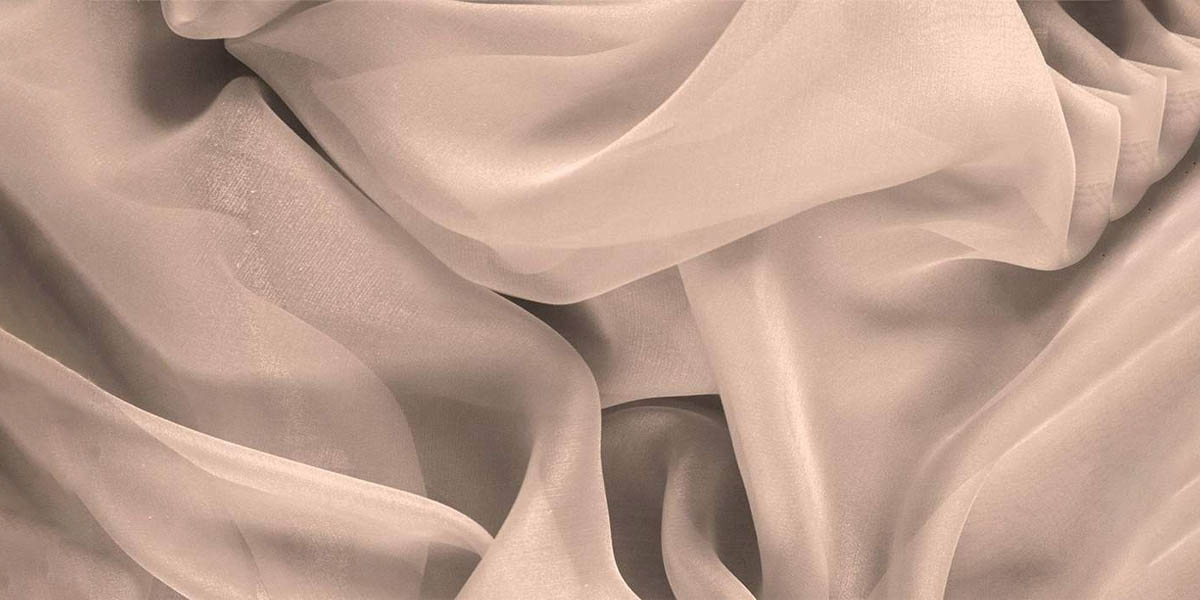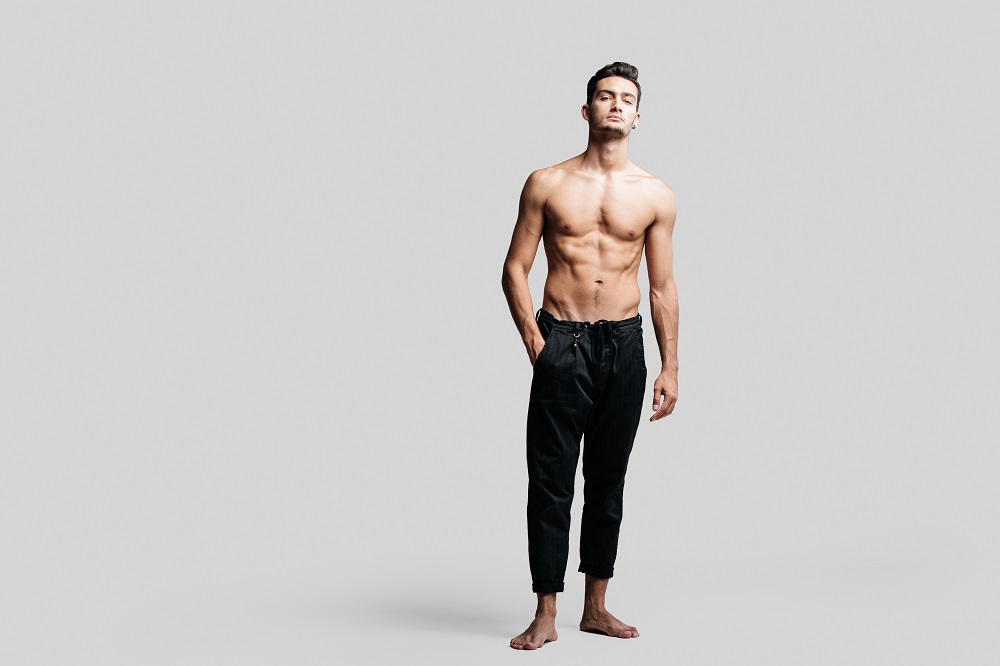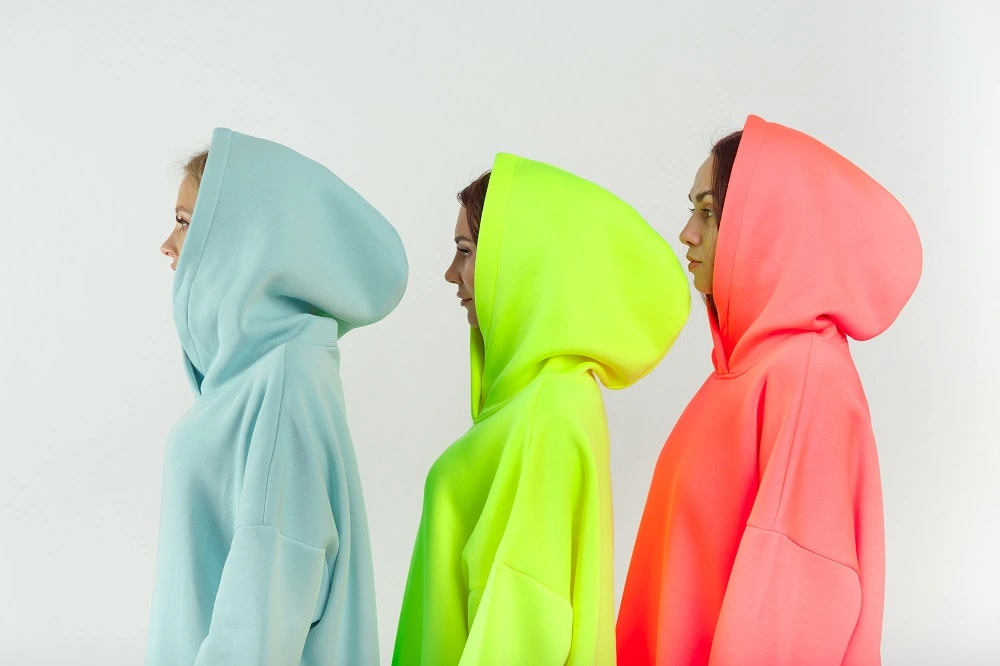As the summer sun heats up, are you looking to start a clothing line that keeps your customers cool and comfortable? Beating the heat is all about breathability, and that’s where Lightest Clothing Materials come in. In this blog, we’ll talk about 30 of the most lightweight fabrics around, perfect for crafting breezy outfits that will fly off the shelves! Get ready to dive into a world of cool, comfortable, and seriously stylish clothing options.
Why Do Light Fabric Material Matter?
Comfort and Wearability
Using lightweight materials is crucial for designing clothing that your clients will enjoy wearing. By selecting lightweight materials, you are emphasizing comfort and ensuring that each item in your collection is soft and breathable on the skin. These products decrease the chances of getting too hot, making sure your clients remain comfortable and cool all day long. Whether it’s a casual outing or a formal event, lightweight fabrics improve the comfort of any outfit, making them a versatile option for all occasions.
Seasonal Demand
As the temperature increases, the need for clothing made from light materials also increases. Customers are actively searching for clothes that can help them stay cool in hot weather, and your company can meet this need by including the lightest fabric options in your clothing line. By staying ahead of the seasonal trend, you can appeal to more customers seeking summer-appropriate choices. Providing a variety of lightweight fabrics helps your store stay current and sought-after in the summer season.
Customer Satisfaction
When customers discover clothing that is both fashionable and cozy, it greatly enhances their overall contentment. Light materials are essential in creating a comfortable fit that leads to customers coming back for more. Satisfied customers are more inclined to endorse your brand to others, which boosts word-of-mouth advertising and brand loyalty. By focusing on using lightweight materials, you improve the quality of your products, building a loyal customer following who values the comfort and breathability of what you offer.

The Top 30 Lightest Clothing Materials
Cotton Voile
Cotton voile also known as “thinnest cloth” is well-known for its remarkable lightness and breathability. This fabric feels extremely soft, offering a delicate sensation on the skin, perfect for hot weather. It hangs in a lovely way, bringing a hint of sophistication to any outfit.
Cotton voile is ideal for making light summer dresses, blouses, and skirts. Its light weight makes it perfect for layering without extra bulk, enabling you to create versatile pieces that easily go from day to night.
Linen
Linen is known for its exceptional lightness and breathability. This material feels naturally cool, making it a great option for hot weather. Linen offers high absorption and fast drying, providing all-day comfort. Despite having a slightly rough feel, the fabric becomes softer after each wash, making it more comfortable to wear.
Linen is perfect for making summer must-haves such as shirts, pants, dresses, and skirts. Its airy and ventilated qualities make it ideal for both casual and formal attire. Linen’s enduring charm and ability to be used in various ways make it an essential part of every summer lineup.
Rayon
Rayon is highly valued for its lightweight quality, providing great breathability and a smooth, silky texture. It hangs elegantly and has a cool sensation on the skin, making it a favored option for clothing in hot weather. Rayon blends can improve its strength and ability to resist wrinkles, increasing its versatility.
Rayon is ideal for making flowing dresses, blouses, and skirts that need a lightweight and airy touch. Its capability to imitate the feel of natural materials such as silk allows it to be appropriate for both informal and formal clothing. Designers love using rayon for its comfort and versatility when creating fashionable and cozy clothing options.
Silk
Silk is famous for its luxurious lightness and outstanding breathability. This material provides a luxurious and comfortable feel on the skin, giving a sense of elegance. Its innate ability to regulate temperature aids in maintaining coolness during hot weather and warmth in chilly conditions, making it suitable for every season.
Silk is ideal for making stylish blouses, dresses, scarves, and sleepwear. Its lightweight and flowing fabric quality makes it perfect for both formal and casual attire, elevating any ensemble with a touch of elegance. Silk’s popular choice for summer clothing is due to its capacity to absorb moisture and allow the skin to breathe.
Chiffon
Chiffon is famous for its extremely lightweight and fragile texture. This transparent material is extremely lightweight and features a delicate shine, bringing a sophisticated element to all clothing items. Even though it is lightweight, chiffon hangs beautifully and provides a flowing characteristic that improves movement.
Chiffon is ideal for making sophisticated evening outfits like dresses, skirts, and blouses. Its otherworldly look makes it popular for formal events and special occasions that require a hint of elegance. Chiffon is also versatile for everyday wear, providing a stylish and airy choice for casual outfits.
Bamboo Fabric
Bamboo fabric is well known for its outstanding lightweight, softness, and breathability. It boasts a luxurious touch like silk, providing exceptional comfort on the skin. Bamboo fabric has excellent absorption properties that draw moisture away, helping to keep the person comfortable and dry in warm environments. It provides natural UV protection, making it a great option for summer attire.
Bamboo material is perfect for making a range of garments, like t-shirts, dresses, and activewear. Its gentle feel and ability to let air through make it great for delicate skin, while its ability to draw away moisture ensures comfort when being active.
Georgette
Georgette is highly valued for its lightweight, delicate texture, and superb drape. It is a fabric that is partially see-through, with a smooth and fluid texture that gives a light and breezy sensation ideal for hot climates. Georgette material usually has a slightly wrinkled feel, adding a subtle dimension to clothing and improving their sophistication.
Georgette is a flowing fabric and is commonly utilized to make flowing dresses, blouses, skirts, and scarves. Its lightweight and breathability make it perfect for formal and evening attire, providing a luxurious look while still being comfortable.
Modal
Modal is famous for its outstanding softness, lightweight quality, and breathability. It is a silky smooth fabric made from fibers of beech trees, known for its beautiful drape. Modal is very absorbent and does not shrink or fade easily, ensuring its durability for daily use. It also maintains its form effectively, offering both comfort and freedom of motion.
Modal is perfect for creating various types of clothing such as t-shirts, underwear, pajamas, and dresses. Its luxurious and gentle touch on the skin has made it a favored option for intimate clothing and loungewear. Modal’s ability to absorb moisture and allow air to flow through makes it a comfortable choice for hot weather, suitable for various occasions from everyday wear to more formal settings.
Hemp
Hemp is renowned for its outstanding lightweight, breathability, and longevity. The texture is somewhat rough but becomes softer after each wash, ideal for daily wear. Hemp cloth is very absorbent and naturally resistant to mold and mildew, which makes it perfect for humid weather. It also offers great protection against UV rays, which is why it is ideal for outdoor attire.
Hemp material is adaptable and suitable for various clothing items such as shirts, pants, jackets, and accessories. Its ability to withstand wear and allow air to pass through makes it perfect for both activewear and casual wear. Hemp fabric hangs nicely and maintains its shape long-term, guaranteeing durability and fashion.
Lawn Cloth
Lawn fabric is recognized as a thin fabric material, with a delicate weave, and outstanding ventilation. It usually possesses a crunchy, sleek consistency that feels cold on the skin, making it ideal for hot temperatures. Lawn fabric is the softest material for clothes and is commonly created using cotton or linen fibers, which increase its soft and comfortable qualities. It hangs gracefully and holds its form nicely, providing a sophisticated appearance while still ensuring comfort.
Lawn fabric is perfect for making summer tops, dresses, skirts, and light outer layers. The lightness of the fabric allows for it to be worn casually or semi-formally, adding versatility to your wardrobe. The smooth texture of lawn fabric also appeals to clothes needing detailed designs or delicate patterns.
Cupro
Cupro is famous for being lightweight and breathable, with a luxurious silk-like feel. It possesses superb drape and a smooth texture, which makes it pleasant to wear during hot weather. Cupro is very absorbent, moving moisture from the skin, and improving its breathability and comfort. It also boasts a delicate shimmer that brings a hint of sophistication to every piece of clothing.
Cupro’s drape and softness make it perfect for making flowy dresses, blouses, and skirts. It is utilized in linings and as a replacement for silk in different instances where lightweight and breathable fabrics are needed.
Tencel
Tencel is highly valued for its remarkable lightweight, breathability, and smooth silky feel. Made from sustainably sourced wood pulp, typically obtained from eucalyptus trees, this is a natural and environmentally conscious option. Tencel fibers have a high level of absorbency, drawing moisture away from the body to help the person stay cool and dry in hot conditions. The material hangs elegantly and provides a lavish sensation, ensuring comfort throughout the day.
Tencel can be used for various clothing items such as shirts, blouses, dresses, and denim due to its versatility. Its sleek texture and airy quality make it perfect for designing chic and cozy attire that seamlessly shifts from daytime to nighttime wear.
Gauze
Gauze is highly valued for its light and airy texture, making it one of the most lightweight fabrics. The fabric is highly breathable, making it easy for air to circulate and keeping the person wearing it cool and comfortable, especially in warm and damp weather. Gauze material is usually gentle and soft on the skin, providing a pleasant wearing sensation.
Gauze material is frequently utilized for summer apparel like dresses, tops, and lightweight scarves. Its light quality makes it perfect for layering or wearing on its own during hot weather. Gauze is commonly used in medical environments for bandages because of its ability to allow air to pass through and its absorbent qualities.
Seersucker
Seersucker material is famous for being lightweight and breathable. Usually crafted from cotton with a distinct puckered texture, it encourages airflow, providing excellent breathability and comfort for hot weather wear. Seersucker is low-maintenance and typically needs minimal to no ironing, contributing to its convenience.
Seersucker is perfect for making summer must-haves like suits, shirts, dresses, and skirts. Its textured appearance not only improves air circulation but also gives clothes a unique visual charm. Seersucker is versatile enough to be worn casually or for formal events.
Crepe
Crepe material is famous for its light feel and great ability to allow air to pass through. It possesses a slightly wrinkled texture that provides it with a distinct look and improves its fall. Crepe fabric is commonly created from silk, polyester, or wool, providing varying degrees of softness and shimmer based on the type of material utilized. It hangs nicely and is pleasant to wear in hot weather because of its light and breathable fabric.
Crepe fabric is adaptable and suitable for a range of garments like blouses, skirts, and dresses. Its weightlessness and fluidity make it perfect for designing sophisticated and cozy ensembles suitable for both informal and formal events. Crepe is also popular for its capability to retain its form and prevent wrinkling, increasing its attractiveness in the fashion sector.
Muslin
Muslin is famous for being light and breathable, which makes it a flexible and lightweight fabric material option for hot weather. It is commonly made from cotton and features a simple weave pattern that increases its lightness and smooth feel. Muslin hangs nicely and feels pleasant on the skin, offering a light and airy sensation perfect for summer clothing.
Muslin material is frequently utilized for crafting summer attire such as dresses, tops, skirts, and garments for infants. Its lightweight is ideal for making loose-fitting clothes that provide freedom of motion. Muslin is popular for its capacity to absorb dyes effectively, providing fashion designers with a variety of bright color choices.
Jersey
Jersey fabric is famous for being lightweight, which is why it is a popular option for comfortable and breathable clothing. Usually, it is crafted from cotton or a mixture of cotton and synthetic materials such as polyester or rayon. Jersey fabric has a sleek, flexible feel that hangs nicely and provides great comfort. Additionally, its easy maintenance makes it a convenient option for daily use.
Jersey fabric is flexible and appropriate for various types of clothing, such as t-shirts, dresses, skirts, and loungewear. Its combination of softness and stretchiness makes it perfect for both casual and athletic attire. Jersey fabric’s ability to breathe and wick moisture makes it ideal for both activewear and athleisure.
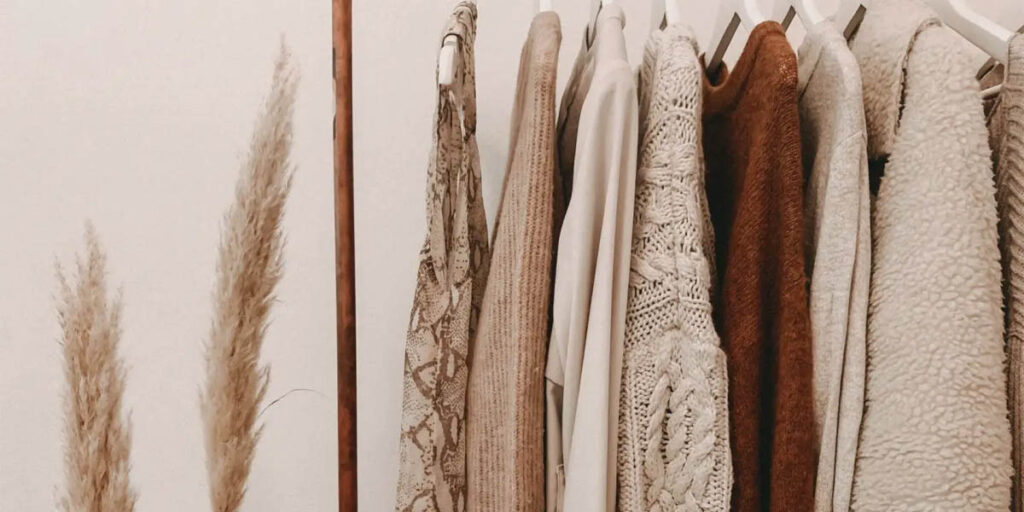
Polyester Microfiber
Polyester microfiber is famous for being light in weight, making it a great option for designing breathable and comfortable apparel. Designed to improve moisture-wicking abilities, it provides a smooth touch and keeps the wearer dry and cool. Polyester microfiber is strong and does not wrinkle easily, making it low-maintenance and perfect for traveling.
Polyester microfiber is frequently utilized in activewear, sportswear, and outdoor clothing because of its capacity to offer comfort and enhance performance while engaging in physical activities. It is also utilized in regular clothing such as shirts, pants, and jackets, providing a blend of lightness and practicality.
Organza
Organza is renowned for its transparency and delicate quality, making it one of the most lightweight fabric materials on the market. It possesses a crisp feel and a subtle shine, providing clothing with a fragile and refined look. Even though it is lightweight, organza retains some rigidity, providing support to garment styles.
Organza is often utilized in formal and evening attire, like skirts, dresses, and blouses, to convey a feeling of opulence and elegance due to its lightweight and airy characteristics. It is commonly used for decorative purposes such as overlays and trims, bringing a hint of otherworldly charm to designs.
Viscose
Viscose, also called rayon, is renowned for being lightweight and breathable. It possesses a smooth feel that hangs gracefully, providing both comfort and sophistication. Viscose fabric’s high absorbency makes it perfect for hot climates as it draws moisture away from the body, keeping the person cool and dry.
Viscose is a flexible material found in a variety of clothing pieces like dresses, blouses, and skirts. Its sleek texture and graceful fall make it appropriate for both informal and formal attire. Viscose easily combines with different fibers, increasing its versatility in making blended fabrics with distinct characteristics.
Alpaca Wool
Alpaca wool is highly valued for its lightweight and opulent softness. It offers excellent breathability, allowing the flow of air while also maintaining warmth in colder weather. Alpaca fiber is hypoallergenic as well, so it is appropriate for individuals with sensitive skin. Its fibers naturally repel water and wick away moisture, providing comfort in different weather conditions.
Alpaca fiber is perfect for making light sweaters, cardigans, scarves, and shawls. Its ability to insulate makes it ideal for adding layers in both casual and formal environments. Clothing made from Alpaca wool is recognized for its ability to resist pilling and last for a long time, offering enduring comfort and fashion.
Batiste
Batiste is famous for its gentle and lightweight fabric material, creating an extremely airy and breathable feel. It usually exhibits a velvety, silky feel that seems luxurious when in contact with the skin. Batiste material is recognized for its see-through quality and delicate threads, which help maintain its lightness while also offering coverage.
Batiste is perfect for making sophisticated and airy clothing like blouses, dresses, and skirts. Its light and breezy quality makes it ideal for hot temperatures, providing both comfort and fashion at the same time. Batiste is also suitable for adding structure to garments as linings, without increasing bulk.
Lyocell
Lyocell is famous for its light weight and outstanding breathability. It comes from natural cellulose fibers, usually obtained from well-managed forests. Lyocell fabric is extremely gentle, offering a soft feel and smooth texture against the skin. Its superb ability to wick moisture away makes it perfect for hot and humid weather conditions.
Lyocell is flexible and utilized in a range of clothing pieces like tops, gowns, and athletic wear. Its ability to control moisture guarantees comfort while engaging in physical activities, which is why it is in high demand for athletic clothing. Lyocell’s capacity to effortlessly mix with other fibers increases its adaptability in producing blended fabrics that provide improved performance and comfort.
Satin
Satin is famous for its glossy shine, silky touch, and lightweight. Usually crafted from silk, polyester, or a combination of the two. Satin textile possesses a shiny exterior that beautifully reflects light, providing clothing with an elegant and refined look. While it may appear fragile, satin can be quite breathable, depending on how it is made.
Satin’s elegant drape and shiny finish make it a popular choice for eveningwear, lingerie, and formal attire. It brings a dash of elegance to dresses, blouses, and skirts, making it perfect for special events. Satin’s light weight also makes it appropriate for hot weather, offering comfort while maintaining style.
Nylon
Nylon is famous for being both a lightweight fabric material and long-lasting. This artificial material is recognized for its durability and flexibility, which helps it withstand damage and deterioration. Nylon also dries fast and wicks away moisture, improving its comfort in hot weather. Although traditionally less breathable than natural fibers, advancements in textile technology have led to nylon fabrics with better breathability.
Nylon is often utilized in activewear and sportswear because of its light weight and ability to stretch. It is perfect for designing clothing pieces like leggings, swimwear, and outerwear that require mobility and durability. Nylon’s water-repelling property makes it a good choice for outdoor and aquatic activities.
Mesh
Mesh fabric is known for its open, net-like design which allows for great breathability and ventilation. It is very light and enables good air circulation in the clothing, perfect for staying cool in hot weather. Different types of mesh fabrics can differ in their feel and stretch, giving options for creativity in both style and functionality.
Mesh is often employed in sportswear, activewear, and everyday attire because of its ventilation and moisture-wicking capabilities. Frequently utilized in panels, inserts, or entire clothing items to improve ventilation and comfort while engaging in physical activities. Mesh brings a contemporary and athletic appearance to clothing designs as well.
Lace
Lace is famous for its fragile look, complex designs, and lightweight. It is commonly constructed from yarn or thread with an airy lattice design, providing great airflow. Different lace fabrics can have varying thicknesses and textures, but they all possess a delicate quality that brings sophistication to any garment.
Lace is frequently utilized as a decorative overlay in clothing, enhancing dresses, tops, and lingerie with a touch of elegance. Its light and delicate qualities make it great for designing feminine and romantic items perfect for special events.
Triacetate
Triacetate is recognized for its lightweight and silky texture, similar to silk but with more durability and low maintenance. It provides great air circulation, allowing for a pleasant experience when worn in hot temperatures. Triacetate fabric is resistant to wrinkles and will maintain its shape and appearance even with repeated wearing.
Triacetate is perfect for making clothing like blouses, skirts, and dresses that need a graceful and lightweight drape. Its wrinkle-resistant properties make it great for both traveling and everyday use, providing a blend of fashion and functionality.
Spandex
Spandex, also called elastane or Lycra, is famous for its outstanding stretchiness and ability to bounce back. Spandex, although not usually light, is frequently mixed with other materials to improve their flexibility and ability to fit the form. It offers flexibility and comfort, enabling clothes to follow the body’s movements without compromising their shape.
Spandex is frequently utilized in athletic attire, sports apparel, and tight-fitting garments like leggings, swimsuits, and workout tops. It is perfect for clothing that needs flexibility and support during physical activities because it can stretch and then bounce back to its original shape.
Acrylic
Acrylic is recognized for being light in weight, which makes it a favored option for producing clothing that is comfortable and easy to wear. It feels soft and holds its shape well, providing both durability and lightweight properties. Blending acrylic fabrics with other fibers is common to improve performance attributes like moisture-wicking abilities.
Acrylic is often utilized in knitwear like sweaters, scarves, and socks because of its lightweight nature and ability to provide insulation. It is also utilized in sportswear because of its ability to manage moisture. Acrylic clothing is simple to care for and manage, making it perfect for daily use.
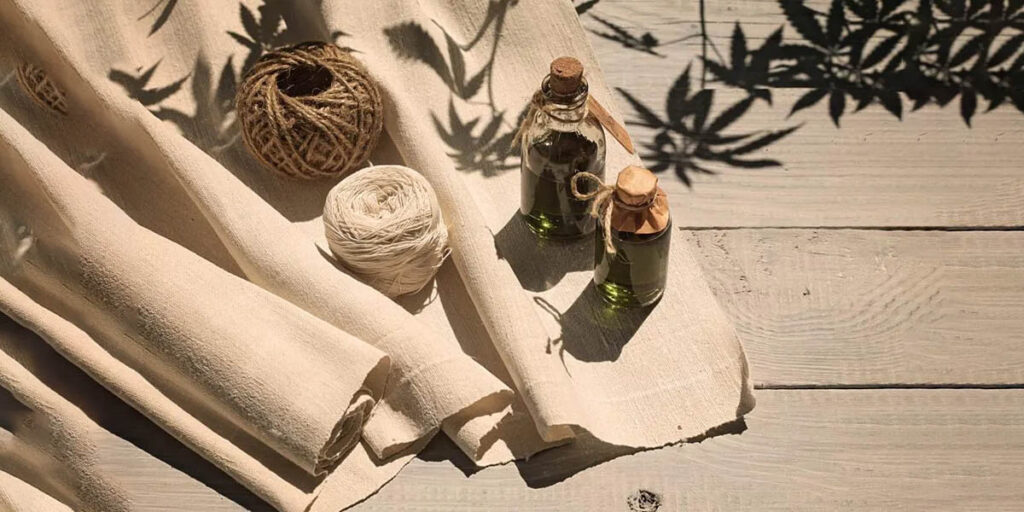
Choosing the Right Material for Your Needs
It is essential to consider multiple factors when choosing lightweight fabrics for your clothing line to effectively address the needs of your target audience. manufacturers catering to activewear in the B2B sector may focus on materials that provide moisture-wicking features and lasting durability, which are perfect for customers who participate in physical activities.
For everyday use, choose materials that provide comfort, breathability, and easy maintenance to meet the needs of your daily routine. Consider the preferred drape and structure when designing garments, whether it be flowing dresses or tailored blazers.
Balancing quality with affordability is crucial in determining the feasibility of production, as cost and availability are important factors. By knowing what your target audience likes and how active they are, you can choose lightweight materials that improve comfort, style, and overall happiness for your clients with confidence.
Sourcing Light Fabrics
Reliable Suppliers: Tips For Finding And Selecting Reliable Fabric Suppliers
Discovering trustworthy fabric providers requires extensive investigation and careful assessment. Ask for advice from other professionals in the industry or go to trade shows to network with potential suppliers. Search for suppliers with a background in manufacturing lightweight fabrics and who can offer samples for testing.
Check their credentials and standing in the field to guarantee they follow ethical and sustainable methods. Establishing solid partnerships with suppliers who comprehend your requirements and can reliably provide top-notch fabrics is crucial for the triumph of your clothing brand.
Quality Assurance: Ensuring The Fabrics Meet Your Quality Standards
Ensuring quality control is essential when dealing with thin material. Find a clothing manufacturer that takes good care of quality while manufacturing lightweight fabrics. Enforce thorough testing and inspection procedures to ensure the fabrics meet your needs for performance and durability. Perform evaluations for color steadfastness, shrinkage, and fabric durability to confirm their resistance to daily usage and laundering.
Set up precise quality control procedures with your suppliers and communicate your fabric requirements and performance expectations. By giving importance to quality assurance, you can maintain the credibility of your brand and guarantee customer contentment with every clothing item made.
Cost Considerations: Balancing Cost And Quality For Profitability
It is important to find a balance between cost and quality to achieve profitability in your clothing brand. Despite their higher initial cost, lightweight fabrics offer long-term advantages like enhancing customer satisfaction and building brand reputation. Discuss prices with suppliers for large orders and create payment arrangements that benefit both parties.
Assess the overall production expenses, covering fabric procurement, production, and transportation, to find the most economical method without sacrificing fabric quality. By effectively controlling expenses and ensuring high quality, you can increase profits by providing customers with fashionable, lightweight, and cozy clothing options.
Take Flight with Lightweight Fabrics
In this guide, we have examined a crucial element of garment production: choosing the lightest fabrics for clothing. We’ve talked about a variety of fabrics, including cotton and linen for natural options and polyester and nylon for high-tech synthetics, that provide both comfort and style. These materials are not only light in weight, but they also serve as the basis for making airy, cozy clothing that appeals to present-day shoppers. So, next time when you plan to introduce a summer product line, contact Weft Apparel to discuss how we can transform your ideas into statement pieces!

